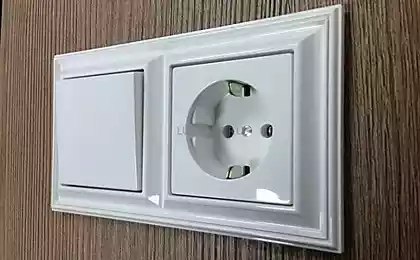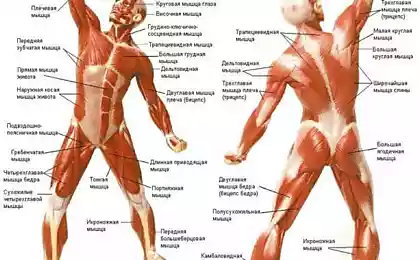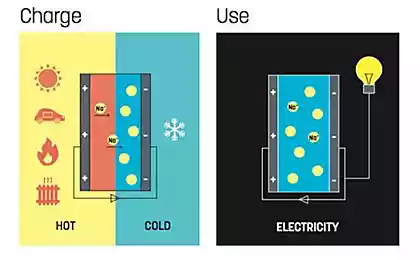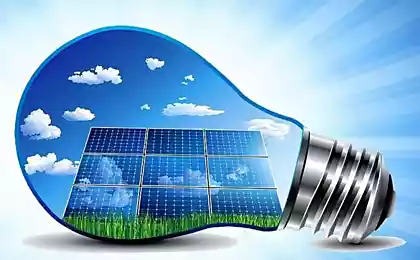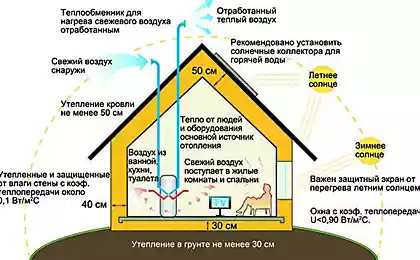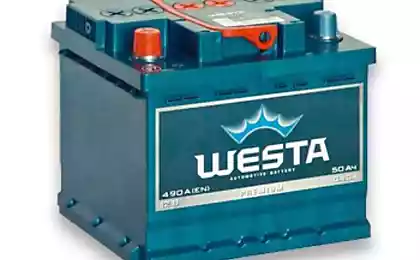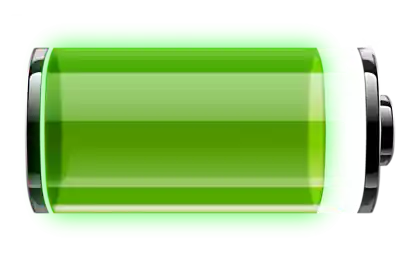436
Supercapacitor that can be recharged from heat of the human body
Professor, Department of mechanical engineering at the University of Texas (Texas A & M Universit), Choongho Yu and Thomas A. Dietz and his group of graduate students developed a new concept of storing electrical energy: a thermally rechargeable solid-state supercapacitors.
Twenty seven million two hundred seventy eight thousand four hundred eighty eight
This innovative supercapacitor can be meet with the use of thermal energy in addition to the traditional method of charging the capacitor with electricity.
"This is the first time it was discovered that a solid polymer electrolyte can produce a large number thermoinduction stress," said Choongho Yu. "Voltage can then be used to initiate electrochemical reactions in the electrodes for charging.»
Fifty five million three hundred sixty one thousand seven hundred fifty
Solid state Thermally chargeable supercapacitor works by converting thermal energy into electrical energy and then stores it in the device. The heat of the human body or any other object that creates a temperature difference, can be used to charge the supercapacitors without the use of external sources of electricity.
Supercapacitor is useful in that it can be used as a power source for mobile electronics, and can be integrated into a wireless data transmission system to control IoT (Internet of things) sensors. IoT is a concept of connecting various electronic devices and sensors to communicate and exchange data, which is especially useful when monitoring in real-time.
Forty one million nine hundred forty six thousand six hundred eighty seven
Yu and his student Suk Lae Kim, used a physical phenomenon known as thermodynamic effect - Sora: they used solid-state polymer electrolyte in which a temperature gradient along the supercapacitor, the ions moves from the hot side to the cold by generating thermoinduction voltage.
According to Choongho Yu, "This thermally Slobodskaya, flexible supercapacitor, powered by thermally diffuse the ions has a great potential for use in electronic devices as an entirely new way of eating without the traditional external source ". published
via
Source: ecotechnology
Twenty seven million two hundred seventy eight thousand four hundred eighty eight
This innovative supercapacitor can be meet with the use of thermal energy in addition to the traditional method of charging the capacitor with electricity.
"This is the first time it was discovered that a solid polymer electrolyte can produce a large number thermoinduction stress," said Choongho Yu. "Voltage can then be used to initiate electrochemical reactions in the electrodes for charging.»
Fifty five million three hundred sixty one thousand seven hundred fifty
Solid state Thermally chargeable supercapacitor works by converting thermal energy into electrical energy and then stores it in the device. The heat of the human body or any other object that creates a temperature difference, can be used to charge the supercapacitors without the use of external sources of electricity.
Supercapacitor is useful in that it can be used as a power source for mobile electronics, and can be integrated into a wireless data transmission system to control IoT (Internet of things) sensors. IoT is a concept of connecting various electronic devices and sensors to communicate and exchange data, which is especially useful when monitoring in real-time.
Forty one million nine hundred forty six thousand six hundred eighty seven
Yu and his student Suk Lae Kim, used a physical phenomenon known as thermodynamic effect - Sora: they used solid-state polymer electrolyte in which a temperature gradient along the supercapacitor, the ions moves from the hot side to the cold by generating thermoinduction voltage.
According to Choongho Yu, "This thermally Slobodskaya, flexible supercapacitor, powered by thermally diffuse the ions has a great potential for use in electronic devices as an entirely new way of eating without the traditional external source ". published
via
Source: ecotechnology
Pumpkin flour — normalizes metabolism and strengthens the immune system
What should not be tolerated no self-respecting woman
